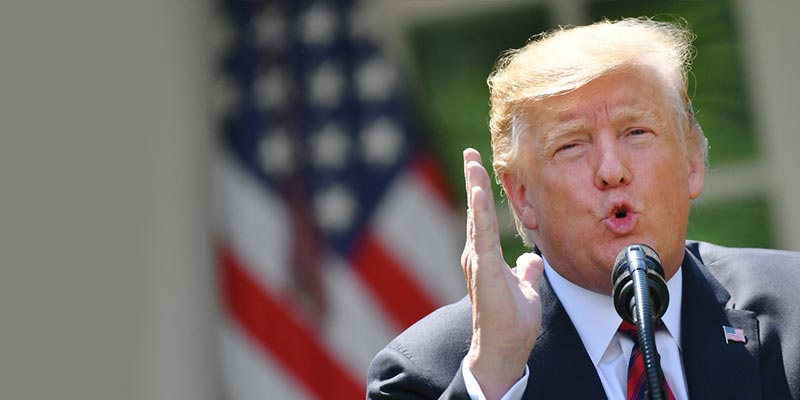- World
- May 17
Trump unveils radical immigration plan
US President Donald Trump proposed overhauling the immigration system and make it merit-based from which foreigners, including hundreds and thousands of Indian professionals and skilled workers, waiting to get green cards or permanent legal residency stand to benefit.
The major immigration policy, however, is unlikely to get congressional nod soon, given the bitter political divide between the Democrats - who have a majority in the House of Representatives - and the Republicans who control the Senate. Notably, America’s last immigration overhaul was 54 years ago.
What are the key points of the proposal?
Trump said he is proposing a merit-based immigration system wherein permanent legal residency would be given based on points for age, knowledge, job opportunities and civic sense.
The proposals significantly increase the quota for skilled workers from the existing nearly 12 per cent to 57 per cent. Besides, under the proposed reforms, immigrants will be required to learn English and pass a civics exam prior to admission.
“Under the senseless rules of the current system, we are not able to give preference to a doctor, a researcher, a student who graduated No. 1 in his class from the finest colleges in the world, anybody. We are not able to take care of it. We are not able to make those incredible breakthroughs,” Trump said.
He added that companies are moving offices to other countries because “US immigration rules prevent them from retaining highly skilled even if they are totally brilliant people”.
Observing that only 12 per cent of legal immigrants are selected based on skill or merit, he said in countries like Canada, Australia and New Zealand, that number is closer to 60 per cent, and even 70 per cent and 75 per cent in some cases.
Why is it difficult to get approval?
Democratic support would be needed to advance any legislation through the Republican-led Senate - let alone the Democratic-controlled House - making it unlikely that Trump’s plan will move forward ahead of the November 2020 election.
What is the general reaction to the plan?
Trump’s proposal, roundly panned by Democrats and immigration advocacy groups, is aimed at trying to unite Republicans - some who want to boost immigration, others who want to restrict it - ahead of next year’s presidential and congressional elections.
Democratic House Speaker Nancy Pelosi said Trump’s plan was “dead on arrival” and added that it was “not a remotely serious proposal”.
Senate Minority Leader Chuck Schumer dubbed it as a political document. “(This) isn’t a serious attempt at immigration reform. If anything, it’s a political document that is anti-immigration reform,” he alleged. “It repackages the same partisan, radical anti-immigrant policies that the administration has pushed for the two years all of which have struggled to earn even a simple majority in the Senate let alone 60 votes.”
How will the proposal affect Indians?
Trump’s new proposal is likely to benefit hundreds and thousands of Indian professionals on H-1B visa whose current green card wait, on an average, is more than a decade.
The Immigration and Nationality Act (INA) allocates 140,000 visas annually for all five employment-based Legal Permanent Residency (LPR) or green card categories, roughly 12 per cent of the 1.1 million LPRs admitted in fiscal 2017. It further limits each immigrant-sending country to an annual maximum of 7 per cent of all employment-based LPR admissions, known as the per-country ceiling, or “cap”.
As of April 2018, a total of 306,601 Indian nationals - mostly IT professionals - were waiting in line for green cards, according to the US Citizenship and Immigration Services (USCIS) figures. Indians constitute 78 per cent of the 395,025 foreign nationals waiting for green cards in just one category of employment-based LPR applications.
Due to the cap, the current wait period for the majority of Indians to get a green card is nine-and-a-half years, a study said, adding this could increase or decrease further depending on the number of new applications every year. India is followed by China with 67,031 in line for green cards.
Nearly three out of every four H-1B visa holders as of October 5 are Indian citizens. According to the USCIS, there were as many as 419,637 foreign nationals working in the US on H-1B visas as on October 5. Of these, 309,986 are Indians.
Indians, who account for 73.9 per cent of the total H-1B visa holders in the US, are followed by the Chinese, accounting for 11.2 per cent of the total foreign nationals on this work visa.

